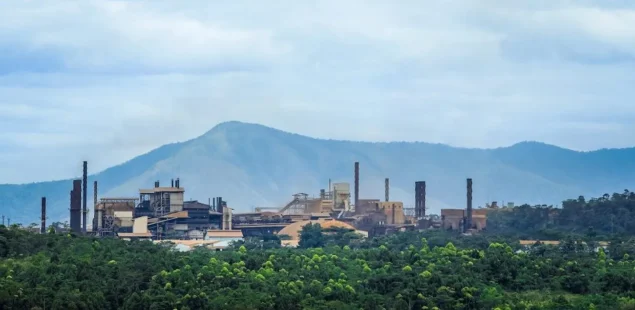
Global alumina production, a key raw material for aluminum smelting, declined to 12.41 million tonnes in April, down 2% from the previous month, according to data from the International Aluminium Institute (IAI), an industry association. The drop was driven primarily by reduced output in China, which accounts for nearly 60% of global production. However, year-over-year production rose 4% compared to 11.96 million tonnes in April last year.
The International Aluminium Institute, a global trade body representing the world’s primary aluminium producers, tracks production data across major aluminum-producing regions. The organization provides monthly statistics that serve as industry benchmarks for market participants, analysts, and policymakers monitoring global aluminum supply chains and market dynamics.
Production Dynamics by Region
China’s alumina production totaled 7.38 million tonnes in April, marking a 3% monthly decline despite maintaining its dominant position in global output. The country’s production nevertheless increased by more than 5% compared to the same period last year, reflecting the ongoing expansion of China’s aluminum industry infrastructure. This regional performance significantly influenced global production patterns given China’s outsized role in the market.
Oceania experienced a marginal decrease, with output falling to 1.44 million tonnes from 1.45 million tonnes in March. The region’s production remained relatively stable, with the minor decline reflecting normal operational variations rather than structural changes in capacity utilization.
Africa and Asia, excluding China, showed positive momentum with production rising to 1.20 million tonnes in April from 1.15 million tonnes in March. This increase of 50,000 tonnes represented one of the few bright spots in regional production data, suggesting improved operational efficiency or capacity additions in these markets.
European and South American Performance
European alumina production contracted by 51,000 tonnes to reach 592,000 tonnes in April, continuing a pattern of reduced output in the region. The decline reflects ongoing challenges facing European aluminum producers, including high energy costs and competitive pressures from lower-cost production centers.
South America recorded a 1% monthly decrease, with production falling to 992,000 tonnes. The region’s performance aligned with broader global trends, though the decline was relatively modest compared to other major producing areas.
Market Impact and Pricing
Despite the monthly production decline, average daily global alumina production actually increased to 413,600 tonnes in April from the revised 410,400 tonnes in March. This apparent contradiction reflects calendar effects, as April has 30 days compared to March’s 31 days, resulting in higher daily averages despite lower total monthly output.
Global primary aluminum production also declined by more than 3% to 6 million tonnes in April, indicating broader weakness across the aluminum supply chain. The aluminum market reflected these production concerns through price movements on major exchanges.
On the Multi Commodity Exchange of India, the most-active June aluminum contract traded down 0.3% at 237.95 rupees ($2.84) per kilogram. Meanwhile, the London Metal Exchange three-month aluminum contract declined 0.7% to $2,468 per tonne, suggesting market participants were pricing in the production weakness and its potential impact on future supply availability.
Alumina serves as the primary feedstock for aluminum production, with approximately 2 tonnes of alumina required to produce 1 tonne of primary aluminum through the electrolytic smelting process. Recent production data indicates a complex market environment where year-over-year growth continues despite monthly volatility, reflecting both seasonal factors and ongoing capacity adjustments across major producing regions. Current pricing dynamics on global exchanges suggest market participants are closely monitoring supply-demand balances as production patterns evolve throughout 2025.



